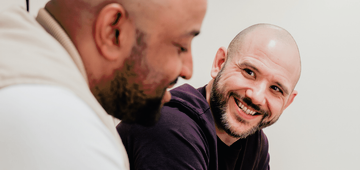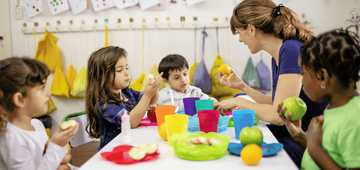
Dr Lisa Ackerley, Chartered Environmental Health Practitioner and Media Hygiene Expert, gives us her 10 top tips to prevent Campylobacter food poisoning.
Some people think of food poisoning as a mild illness that, if anything, might help them lose a few pounds. I recently watched this clip of a man who contracted Campylobacter food poisoning and went on to develop Guillain-Barre syndrome, causing him to become paralysed. Having also seen a friend go through a similar slow recovery from this syndrome I know how awful, painful and scary it is.
Simple precautions can help to prevent what can be a life-changing, or even life-threatening, event. When we think about the chain of infection, the places to break that chain become very obvious and we see that these precautions are simple and inexpensive.
In the clip Dai talks about the importance of cooking chicken to prevent illness but there is more to it than that. It may have been that he did cook his chicken properly, so how else could he have become so ill?
Campylobacter is infectious in very low numbers, so contamination on your fingertips transferred to your mouth is enough to cause illness. No fancy incubation of bacteria or production of toxins, just around 500 microscopic bacteria on a fingertip is enough to do the job.
The bacteria could be present on the food itself, food packaging or in the outdoor environment. Apart from the fact that it may not actually have been the food a person ate that caused the illness, what foxes people is the fact that the symptoms take a few days to appear, so trying to figure out what the ‘mistake’ was is difficult.
Despite great progress in reducing Campylobacter in chicken, it is still prevalent and, as we can’t see it, we must to assume that we need to take measures to prevent illness when handling chicken.
10 top tips to prevent Campylobacter food poisoning
- When shopping for raw meats and poultry, keep these items away from ready-to-eat foods in your trolley and bag them separately. Or better still, if you have an anti-bacterial bag for life, use that.
- Wash your hands after packing these foods safely in the fridge away from ready-to-eat foods (I have a fridge box or drawer just for raw meats).
- When preparing chicken, get ready first! All your utensils and ingredients should be out so you don’t have to touch door handles with contaminated hands.
- Don’t wash your chicken as it sprays bacteria everywhere and it is not necessary.
- I use a fork to get my chicken out of the pack and cut it up on the board using a fork to hold it still. Whole chickens get a two fork treatment to get them in the roasting dish. This way I am not coating my hands and nails with Campylobacter.
- Get it in the pan or oven, preferably without touching it, and so long as you cook it to over 75 °C in the centre (I use a thermometer) then Campylobacter should be killed.
- The mess that is left behind, that is what could cause infection. Anything that has been contaminated needs to be disinfected, from utensils and worktops to anything your dirty hands may have touched (phone, screens, handles, cooker knobs, kettle etc).
- The best way to disinfect utensils is in the dishwasher on a hot setting, but if you don’t have a dishwasher wash in hot soapy water. I would tip the wash water away (don’t use for anything else) and then very carefully pour a kettle of just boiled water over the items in the sink as a disinfecting rinse, (Please don’t scald yourself!) or use an anti-microbial spray.
- On surfaces, you need to clean and sanitise and hot soapy water will not be hot enough (if you can bear the heat with your hands it is not hot enough). Use a squirt of anti-bacterial spray, leaving it on the surface for a couple of minutes and then remove with paper towel. Even if you don’t like using chemicals, targeted hygiene is worth it for peace of mind. We aren’t talking bucket loads anyway!
- Finally, I can’t write a blog without saying that hand washing is absolutely key. After handling raw meat and poultry, wash your hands thoroughly with soap and dry them (I would use a piece of paper towel). After doing the cleaning up, wash your hands again.
The cost of these precautions is small in terms of time and money but think of what suffering it may save, which in itself has a huge personal and financial cost. It’s worth it. No-one wants Campylobacter food poisoning!
For more information on Campylobacter food poisoning
I helped to create an e-learning module with RSPH, The Campylobacter: facts and prevention strategies, for which CPD points can be awarded for those who need them. RSPH also gives members free access to a webinar I gave on the subject in 2017.
RSPH members have access to the Campylobacter webinar, and many more, 12 months after original broadcast. If you would like to find out more about our membership, please visit the membership section of our website.



